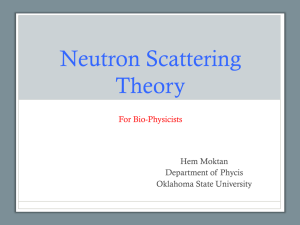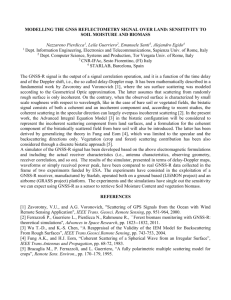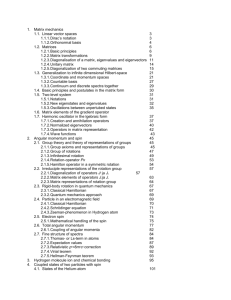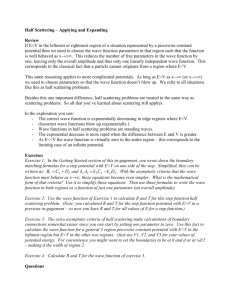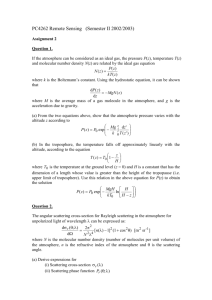MSPH311_F
advertisement
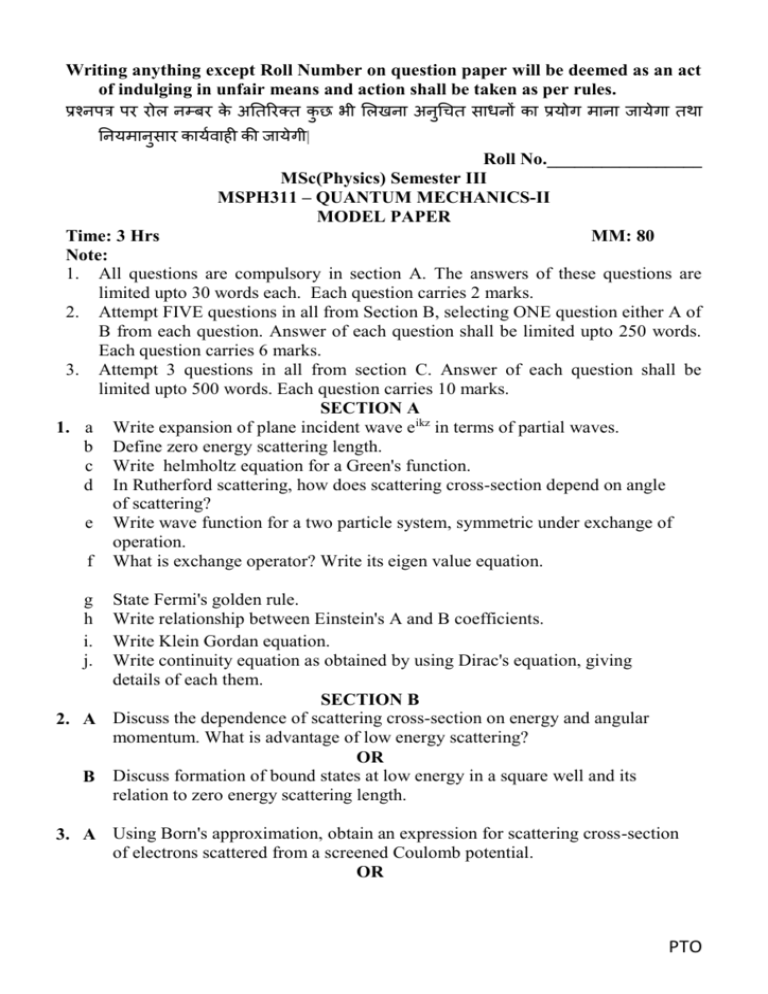
Writing anything except Roll Number on question paper will be deemed as an act of indulging in unfair means and action shall be taken as per rules. प्रश्नपत्र पर रोल नम्बर के अतिररक्ि कुछ भी ललखना अनुचिि साधनों का प्रयोग माना जायेगा िथा तनयमानुसार काययवाही की जायेगी| Roll No._________________ MSc(Physics) Semester III MSPH311 – QUANTUM MECHANICS-II MODEL PAPER MM: 80 Time: 3 Hrs Note: 1. All questions are compulsory in section A. The answers of these questions are limited upto 30 words each. Each question carries 2 marks. 2. Attempt FIVE questions in all from Section B, selecting ONE question either A of B from each question. Answer of each question shall be limited upto 250 words. Each question carries 6 marks. 3. Attempt 3 questions in all from section C. Answer of each question shall be limited upto 500 words. Each question carries 10 marks. SECTION A 1. a Write expansion of plane incident wave eikz in terms of partial waves. b Define zero energy scattering length. c Write helmholtz equation for a Green's function. d In Rutherford scattering, how does scattering cross-section depend on angle of scattering? e Write wave function for a two particle system, symmetric under exchange of operation. f What is exchange operator? Write its eigen value equation. . g State Fermi's golden rule. h Write relationship between Einstein's A and B coefficients. i. Write Klein Gordan equation. j. Write continuity equation as obtained by using Dirac's equation, giving details of each them. SECTION B 2. A Discuss the dependence of scattering cross-section on energy and angular momentum. What is advantage of low energy scattering? OR B Discuss formation of bound states at low energy in a square well and its relation to zero energy scattering length. 3. A Using Born's approximation, obtain an expression for scattering cross-section of electrons scattered from a screened Coulomb potential. OR PTO B Discuss criteria for the validity of Born's approximation. 4. A Show that Fermions repel each other due to exchange anti-symmetry. . OR B Discuss scattering of two identical particles. . 5. A Calculate probability of transition from an initial state to a final state under a constant perturbation switched on at t=0. . OR B State and derive selection rules for dipole transition in an atom. . 6. A Derive Dirac's relativistic wave equation and write properties of . operators. OR B Show that spin is a natural consequence of use of Dirac's relativistic Hamiltonian for free particle. . SECTION C 7. 8. 9. 10. 11. Analyze scattering of a plane wave by a spherical potential using partial wave expansion. Also relate your result with phase shifts of the partial waves. What do you mean by Born's first order approximation? Apply it to obtain cross-section for scattering from a spherically symmetric potential. What do you mean by singlet and triplet states in a two electron atom? Use their symmetry properties to obtain energy eigen values of ortho and para helium. Calculate transition probabilities under harmonic potential perturbation. Using these, calculate transition probabilities for interaction of electromagnetic field with atomic electrons. What is a dipole transition. Solve Dirac's wave equation for a free particle. How do you interpret negative energy states? What is hole theory? PTO




